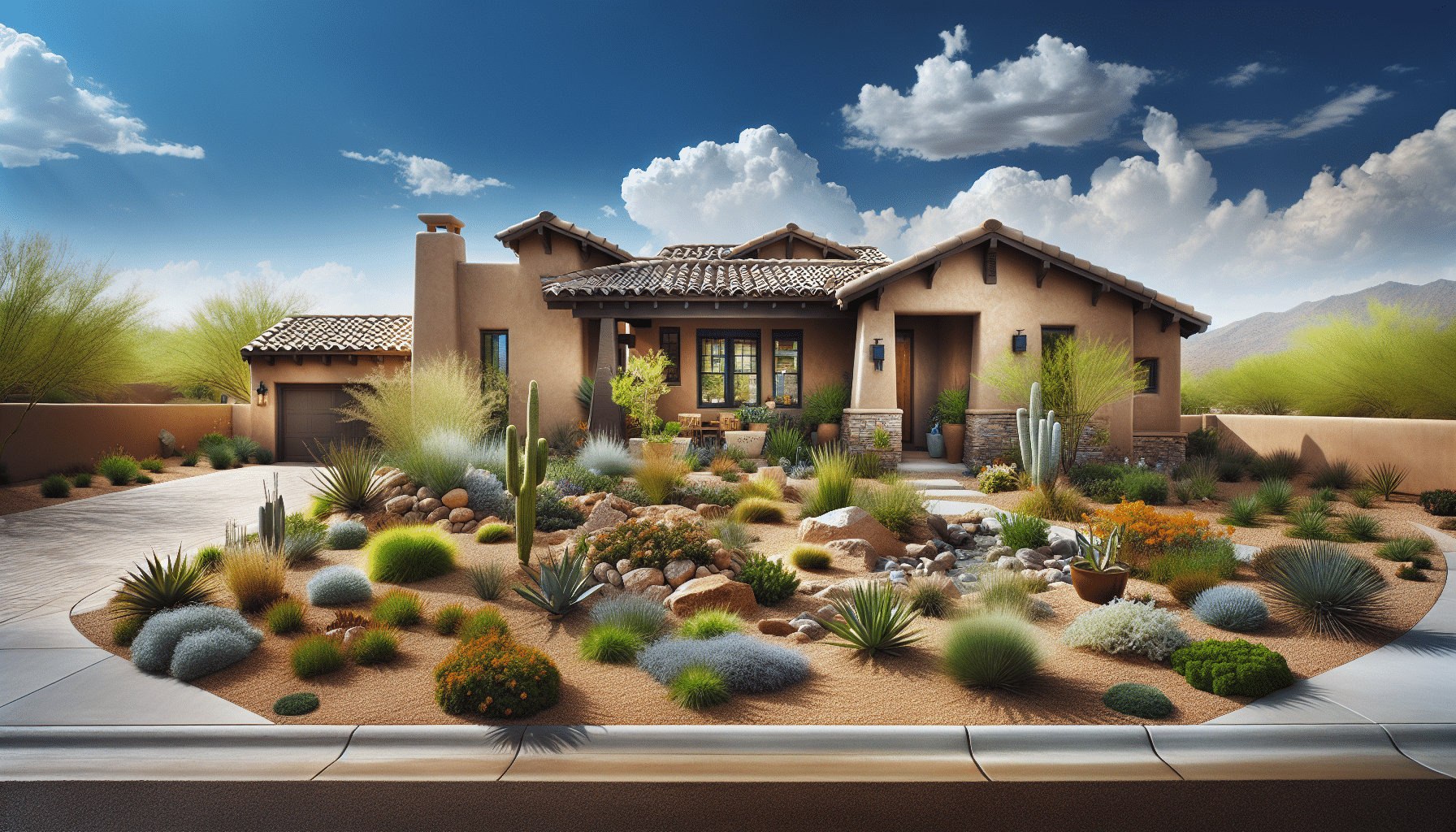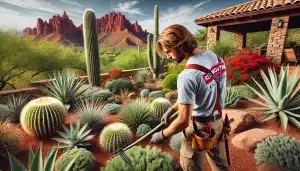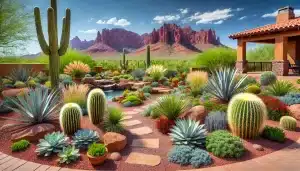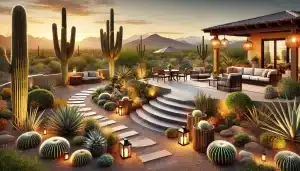Living in the beautiful, yet arid landscapes of the east valley can pose a challenge when it comes to maintaining a lush garden. With water conservation becoming increasingly important, how do you create an oasis without wasting precious H2O? That’s where we, at Red Mountain Landscaping, come in. This guide will walk homeowners like you through the basics of xeriscaping—a sustainable, water-efficient gardening method that’s eco-friendly and stylish.
Contents
Understanding Xeriscaping: The Basics
To get started on your xeriscaping journey, it’s important to understand what it is. Xeriscaping is a landscaping method designed to reduce or eliminate the need for irrigation. Coined from the Greek word ‘xeros’, meaning dry, this approach is ideal for areas like the east valley.
This practice involves using drought-resistant plants, efficient irrigation techniques, and creative design to produce beautiful landscapes that require minimal water. Not only does this process save water, but it also reduces garden maintenance chores, giving you more time to relax and enjoy your garden.
The Benefits of Xeriscaping
Now you might be wondering, “Why should I choose xeriscaping for my garden?” There are numerous advantages beyond just saving water. For starters, xeriscaping is an investment in our environment. It significantly reduces water usage, often by up to 50% or more. This helps preserve local water resources, ensuring sustainability for future generations.
Moreover, xeriscapes are inherently low-maintenance. With fewer plants that need regular watering, fertilizing, and mowing, you’ll find your weekends free from endless yard work. Additionally, this landscaping method fosters biodiversity by promoting native plant habitats, providing food and shelter for local wildlife.
Planning Your Xeriscape Garden
Before you start digging holes for plants, planning the design of your xeriscape is a vital step. Initially, it might seem overwhelming, but breaking it down can make the process much smoother. Start by considering the layout of your garden space and how you use each area. Do you want a spot for entertaining, or perhaps a play area for kids?
Be sure to assess the sunlight patterns and the types of soil in your yard, as these factors will influence plant selection. Prioritize areas that are already in the shade to conserve water naturally, and group plants with similar water needs together. A thoughtful plan will ensure your xeriscape is not only beautiful but practical too.
Choosing the Right Plants
Plant selection is the heart of xeriscaping. It’s crucial to choose varieties that thrive in dry conditions and are well-suited to the local climate. Native plants are often the best choice as they have adapted to survive with minimal water requirements.
Consider incorporating a mix of trees, shrubs, perennials, and ground covers to add texture and color to your garden. Cacti and succulents are great options for an immediate splash of uniqueness and desert appeal. Always remember, the diversity of plants not only adds visual interest but also supports a balanced ecosystem.
Essential Xeriscaping Techniques
- Mulching: Mulch is a xeriscaper’s best friend. It helps retain soil moisture, reduces erosion, and suppresses weed growth. Choose organic mulches like wood chips or bark for added nutrients.
- Zoning: Organizing plants into zones based on their water needs ensures efficient irrigation. By grouping high-water plants together, you can target specific watering without waste.
- Efficient Irrigation: Drip Irrigation Systems are ideal for xeriscaping. They deliver water directly to the roots, reducing evaporation and minimizing water use.
- Soil Improvement: Amending soil with organic material will enhance its water-retention capability. This supports plant health and decreases the frequency of watering.
Maintaining Your Xeriscape Garden
Once installed, your xeriscape will require a bit of attention, but much less than traditional gardens. Regular checks for plant health and system performance are important. Even drought-resistant plants need some care, especially in the early stages of establishment.
Keep an eye out for weed growth, and remove them promptly to ensure they don’t compete with your plants for resources. Adjust your irrigation schedule as needed throughout the seasons, and apply mulch annually to keep your garden in top condition.
Getting Started Without a Hitch
Feeling ready to transform your yard with a xeriscape? Start small—perhaps with one section of your garden—and gradually expand. This phased approach allows you to learn and adapt, ensuring long-term success.
Remember, xeriscaping is an evolving process. Your garden will grow and change, offering a dynamic and rewarding experience. There’s no rush; enjoy the journey, and relish in the sustainable beauty you’ve created.
Partner with Us for Expertise
If you’d like guidance or hands-on help in creating your dream xeriscape garden, Red Mountain Landscaping is here for you. We have years of experience in designing and installing water-efficient landscapes in the east valley. Our team is passionate about sustainable gardening and can tailor solutions to meet your specific needs.
Whether you want a complete garden makeover or simply a few design tips, we’re ready to assist. After all, a greener, more sustainable world starts right in your own backyard. Let us help you make it happen.
Contact Us Today!
Transform your garden into a water-saving oasis with Red Mountain Landscaping. Contact us at 480-373-9312 or Request a Free Quote to get started today!




